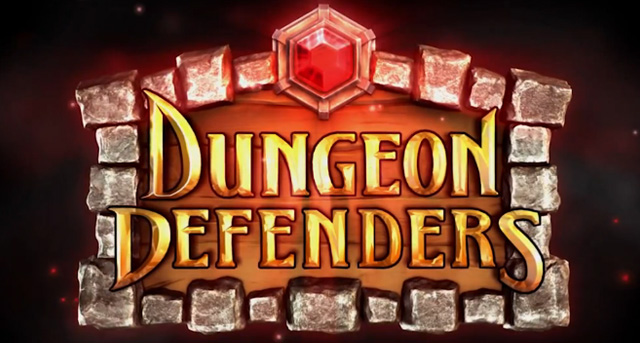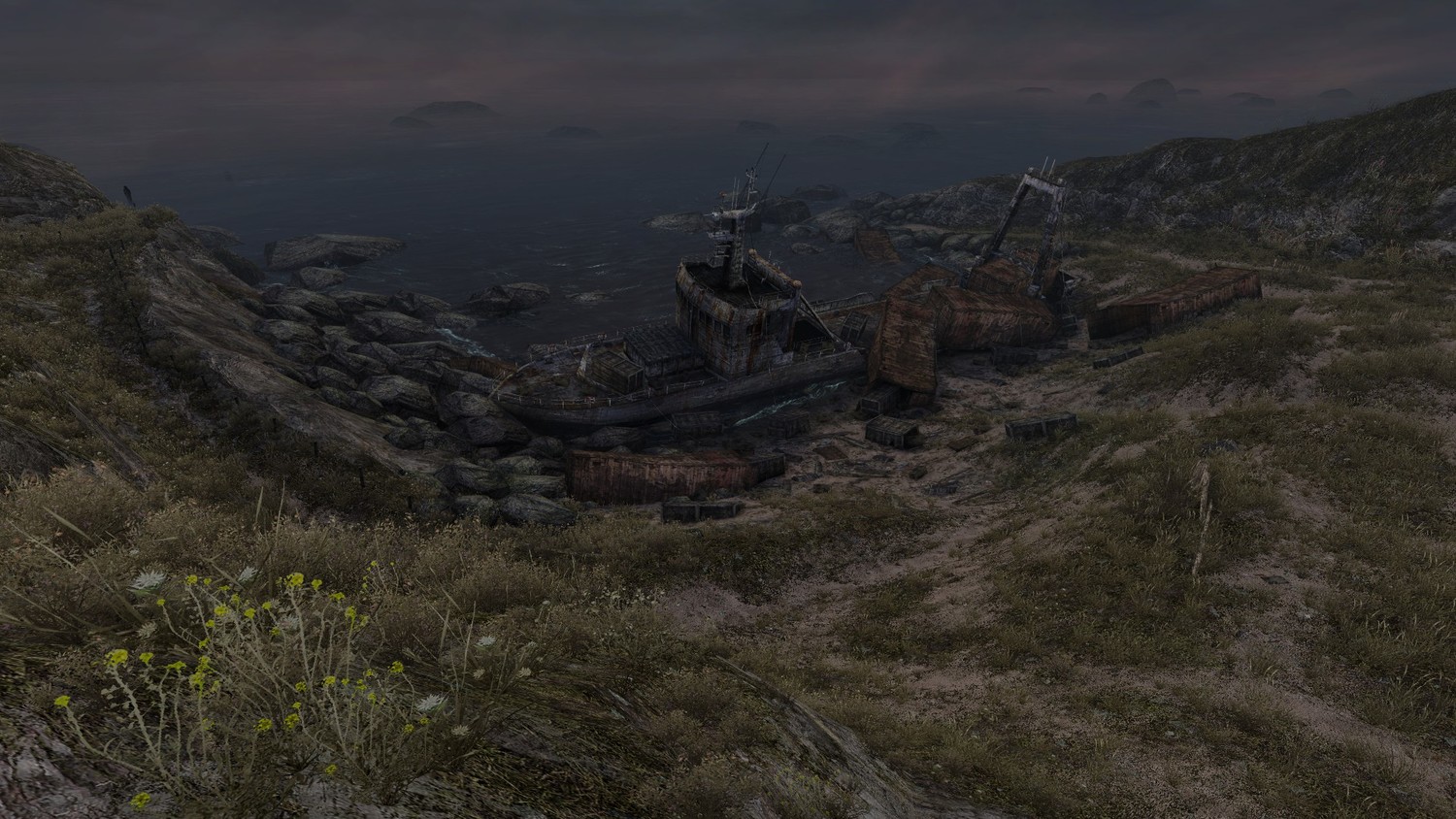
Review: Dungeon Defenders
Posted by Eric G on October 25th, 2011 | 5 Comments | Tags: Dungeon Defenders
I remember exactly where I was when Dungeon Defenders was first announced. I was fishing in the bay off of Long Beach Island a couple of summers ago. We had just made a post about how Trendy Entertainment, a developer I had never heard of, had a hybrid tower defense/third person hack and slash title in the works. The idea, accompanied by a few screenshots to get the point across, intrigued me. As time went by, news of Dungeon Defenders sputtered through the pipelines. An occasional asset would drip here and there, but the game’s release date always seemed to be clogged up. Around Christmas time, a piece of coal in the form of a major delay got dropped into console gamers’ collective stocking. Day one DLC was promised to make up for the delay, but I was still disappointed that I’d have to wait to try it out. The game finally saw the light of day last week, and I’m elated to say that it’s well worth the wait.
The kingdom of Etheria was once guarded by brave warriors against an evil known only as the Old Ones. The champions locked away the power of the Old Ones inside of Eternia Crystals. The heroes get called to a far-off land, and in their stead young heroes-in-training mind the castle chores. The youngins mistakenly unleash the dormant evilness, and now monsters start attacking the castle in order to unleash it upon the world. Your mission, should you choose to accept it, is to defend the crystals. If I were to describe the gameplay for Dungeon Defenders in the form of a milkshake recipe, would you think I’m crazy?
Recipe for a Trendy milkshake:
1 part 3rd person hack and slash
1 part tower defense
A dash of experience points for character progression
Add loot and upgradable item system to taste
Add one (or more) of the following flavors: Apprentice, Squire, Huntress, Monk
Blend until smooth
Serve with a spread of smart, competent multiplayer options
Enjoy over a long period of time
Dungeon Defenders features a hodgepodge of familiar gaming mechanics blended into one savory serving. Its most noticeable elements come from the tower defense and action RPG genres. The first thing you’ll do is create a character. There are four classes to choose from, each one being a bit harder to play as than the previous: Apprentice, Squire, Huntress, Monk. Each class plays almost totally different from the others, and the level up system allows you to further customize your character to play however you please. The next thing you’ll do is embark upon missions. Missions are usually started from your tavern. During a mission, the game is split up into two recurring phases. While in the Build Phase, you collect mana from treasure chests and use it to construct towers. At first, your character only has access to one tower; four more towers are unlocked by leveling up. After setting up your defenses, returning to the Eternia Crystal and pressing square will activate the Combat Phase. At this point, monsters pour in from various predetermined locations and head toward the crystal. You have the ability to run around and aid your towers in pummeling the flood of enemies. You also have the ability to literally aid your towers by upgrading or repairing them at any time (build time is elongated during the Combat Phase). You can pull up the map at any point to see what enemies (and specific enemy types, which becomes a big deal later on) are coming from what passages. The map also shows a ton of other important information including item, chest, and tower locations. If you don’t have a microphone to communicate with, you can set waypoints that appear as both an onscreen prompt and a point on the map. A joke that the guys from Trendy had in their office is that their map looks like most tower defense games. I think it looks better than most tower defense games. If you’re anything like me, you’ll learn to love the map. Hell, if you’re holding the controller the right way, you can even mash on your attacks while the map is onscreen. The phases go back and forth a certain number of times before the mission is completed. If you’re having a tough time getting through a mission, there are several things that you can do to help yourself out.
One of the few truly staggering qualities of Dungeon Defenders is its user friendliness and customizability. There are four preset camera options that should satisfy most gamers. You can also meddle with different control schemes and invert your camera’s pitch if you are so inclined. If you find the User Interface scale to be too bulky, you can size that down, too! Local multiplayers can choose which type of splitscreen they prefer. The only option missing from the whole shebang is custom soundtrack support. Luckily, the game’s onboard music is entertaining enough to forget about your own music for a while. The title track and tavern tune are two notable songs on the soundtrack. Menu navigation is cumbersome at first. With so many options to choose from, the game requires that you have a deep understanding of all of your DualShock’s buttons. If you ever forget how to get to a certain screen, there are always signposts to lead you to your destination. If you don’t have anyone to play with online or offline, fret not, for Dungeon Defenders allows you to play more than one character at a time, more or less.
I’m impressed by Dungeon Defenders for many reasons. One especially impressive element of the game is its difficulty level. I decided that my first character would be the Monk, even though the game cautioned me that the Monk class was for masterful players only. I’m almost embarrassed to say that it took a few replays to beat the first mission. As I leveled up and became more accustomed to the Monk’s strengths, missions became more feasible. They didn’t get easy, though. No, if there’s one thing I can say about this game (on Normal Mode), it’s that this game is not easy. Playing with friends is certainly one way to get help, but the game scales the difficulty so that no matter whom you are playing with, if you’re all around the same level, it will be challenging to complete missions. Another option, one which I finally gave in to choosing, assuring myself that it wasn’t cheating, is to create a second (or third, or fourth) character of a different class. You can swap characters during the Build Phase, which grants you access to different tower sets and character abilities. I suggest you level up a few different character classes just to make sure you’ve chosen the one you feel most comfortable playing. Did I mention leveling up? I sure did.
Defeating monsters and completing missions gains you experience points. It also gains you mana, the only unit of currency in the game, but I’ll get to that in a few sentences. When you level up, you’re given a certain number of points that can be added into one of 10 different stats. The first four stats are for your hero: Health, Damage, Speed, and Casting Rate. There are four similar stats that affect your towers: Health, Damage, Radius, and Attack Speed. The remaining two stats are character class specific and pertain to the given character’s special abilities (the Apprentice, for example, has an Overcharge ability that dramatically reduces his casting time while active). The fact that you can grow your character practically however you want to makes the game very personal and highly replayable. Mana is used to build towers during missions. It’s also used to buy and upgrade equipment in your tavern or at your forge. Each item has a set number of stats. When an item is upgraded, you can choose to upgrade one of these stats. Different items have different maximum levels, so it’s sometimes better to keep an item that can be developed over time. When an item reaches its maximum level, you can name it. From that point on it also shows that it has been “forged by” you. The same progression system is applied to familiars, those little flying pets that help you out in battle and buff you and your towers through the moon.
I can’t say enough positive things about Dungeon Defenders. It has a crisp, clean, cell-shaded graphical style and a framerate that doesn’t chug in the heat of battle, even when hundreds (or thousands) of enemies are making their way to your crystal. The level of difficulty is spot on no matter how many people you play with. After beating missions on Medium, there’s Hard and Insane to conquer. There are a large number of missions and even more challenges to complete, plus a PvP arena if you’re feeling frisky. The loot system and character progression system are some of the most fun, addicting things you’ll play with on the PSN. Dungeon Defenders is the most interesting game I’ve played since Slam Bolt Scrappers and the most enjoyable gaming experience I’ve had since Clash of Heroes. I said it about CoH, and I’ll say it about Dungeon Defenders: It’s not just one of the best PSN games, it’s one of the best games I’ve ever played.
Note: At the moment, the planned cross-platform (PSN, PC, and Android) multiplayer isn’t up and running. When it goes live, I’ll post my impressions and talk about it on the podcast.
A copy of this game was provided by the publisher for review purposes. For more info on our review policy click here. This review is for the PlayStation 3 version of the game.
General Info
- Developer: Trendy Entertainment
- Publisher: Trendy Entertainment
- Release Date: October 2011
- Price: $14.99
- Genre: Hack and Slash, RPG, Tower Defense
- Players: 1-4 (Local AND Online)
- Ratings: Everyone 10+, PEGI 12
Score:
What I Like:
- Four player splitscreen/online combination multiplayer
- Lots of content
- Each class plays differently
- Deep, customizable loot system
- All around smart, polished design choices
- The right level of difficulty, always
What I Dislike:
- Custom soundtracks would have been nice








